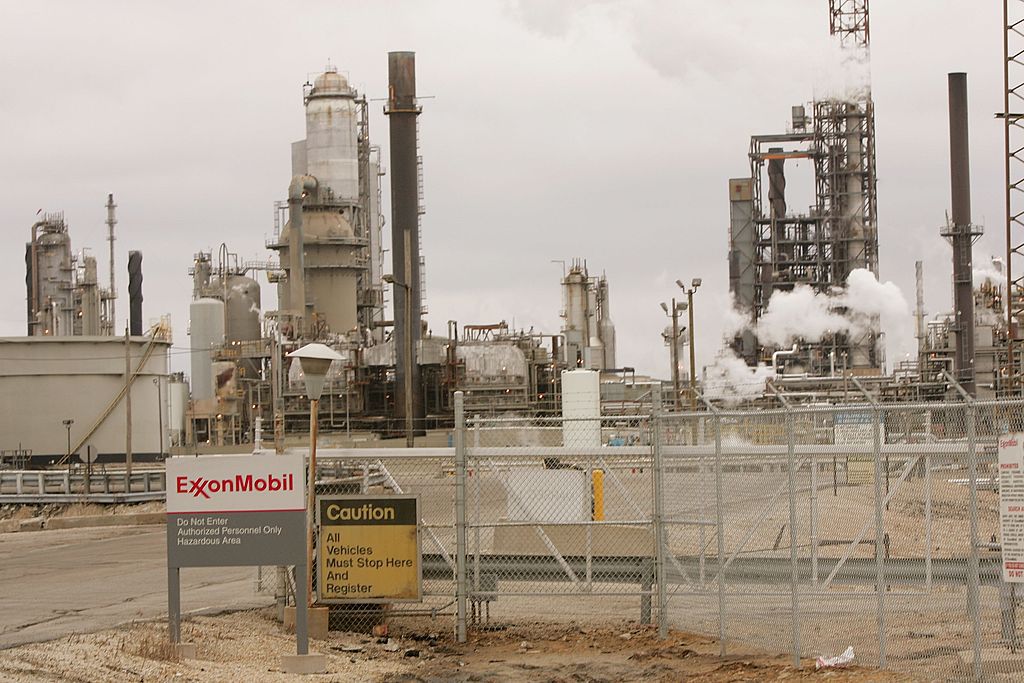Key Takeaways
- Analysts estimate adjusted EPS of -$0.03 vs. $0.41 in Q4 FY 2019.
- The chemical segment is expected to post net income compared to a loss a year ago.
- Revenue is expected to fall for the eighth straight quarter due to plunging energy demand amid the pandemic.
ExxonMobil Corp. (XOM), one of the world’s largest oil and gas companies, is weighing changes in its board of directors as it faces mounting pressure from activist investors to reduce capital expenditures and expand into renewable energy. The pressure comes amid a series of net losses and plunging revenue as a result of the collapse in energy demand triggered by the COVID-19 pandemic.
As oil prices rebound from last spring’s lows, investors will focus on ExxonMobil’s future strategy and on whether its financial results are improving when it reports earnings on February 2, 2021 for Q4 FY 2020. Analysts are expecting the company to post its third consecutive quarter of adjusted losses per share as revenue continues to fall.
Investors will also be closely watching another key metric: net income in ExxonMobil’s chemical segment. The chemical business’s profits have staged a sharp rebound in 2020, helping to bolster the company financially. Analysts forecast the chemical segment will achieve its highest quarterly net income in nearly two years.
Shares of ExxonMobil have lagged the broader market over the past year. The stock’s performance gap with the rest of the market widened significantly following the pandemic-induced market crash between late February and late March 2020. The gap began to narrow in late October, but the stock has suffered a recent pullback. ExxonMobil’s shares have provided a total return of -24.4% over the past 12 months, well below the S&P 500’s total return of 15.6%.
Source: TradingView.
The company’s third-quarter earnings report marked an inflection point for the stock. The adjusted loss per share of $0.19 was not as bad as analysts were expecting. Revenue declined 29.0%, not as steep as the prior quarter but still the second sharpest quarterly decline in at least 15 quarters. The stock, which had begun to rise days before the report after nearly five months of declines, continued to trend higher through to mid-January 2021.
The second quarter was definitely the low point for the year. ExxonMobil reported an adjusted loss per share of $0.70. Revenue plunged 52.8% compared to the same three-month period a year ago. The company said that the pandemic and oversupply conditions significantly impacted its financial results. After an initial move higher in the first week and a half after the report, the stock trended lower over the next several months.
Analysts expect continued weakness in Q4 FY 2020 with some modest signs of improvement. Analysts estimate that revenue will fall 29.1%. However, the adjusted loss per share is expected to narrow to $0.03. This would mark the eighth consecutive quarter of year-over-year (YOY) revenue declines and the third straight quarter of adjusted losses per share. For full-year FY 2020, analysts forecast an adjusted loss per share of $0.64 as revenue falls 31.6%. It would be the first adjusted loss per share and sharpest decline in revenue in at least four years.
| ExxonMobil Key Metrics | |||
|---|---|---|---|
| Estimate for Q4 2020 (FY) | Q4 2019 (FY) | Q4 2018 (FY) | |
| Adjusted Earnings Per Share ($) | -0.03 | 0.41 | 1.29 |
| Revenue ($B) | 47.6 | 67.2 | 71.9 |
| Chemical Segment Net Income ($M) | 766.0 | -355.0 | 737.0 |
Source: Visible Alpha
As mentioned above, another key metric investors will focus on is net income generated by ExxonMobil’s chemical business. The chemical segment produces a wide range of products, including: olefins, used to create plastic packaging, tires, and appliances; aromatics, used in polyester resins, fibers for clothing, and insulation; and glycols, also used in fibers and polyester resins, as well as films. Since the chemical business uses oil as an input in its production process, lower oil prices this year have helped to reduce costs. In that way, the segment acts as a stabilizer, counteracting the adverse effects on ExxonMobil’s upstream and downstream oil businesses during times of weak energy demand and low oil prices. In the past year, it helped to offset the adverse impact of low oil prices on the company’s upstream business, which produces crude oil. It also helped to offset the impact of weak demand for its downstream gasoline, jet fuel, and other refined petroleum products, which have been hurt by weak global economies.
Net income for the chemical segment has continually strengthened this year, although much of that has come from cost reductions, including lower oil prices. In fact, the chemical business posted net income in first three quarters of 2020 even though revenue was down year-over-year in each of those quarters. After posting a net loss of $355.0 million in Q4 FY 2019, ExxonMobil’s chemical business delivered net income of $144.0 million, $467.0 million, and $661.0 million in Q1, Q2, and Q3 of FY 2020, respectively. Analysts expect chemical segment net income to be $766.0 million in Q4 FY 2020, about five times bigger than in Q1. While that figure is still below a three-year high of $1.3 billion reached in Q4 2017, the steady improvement in profitability is helping to cushion ExxonMobil during a period of severe disruption in the oil industry.
This article is auto-generated by Algorithm Source: www.investopedia.com


